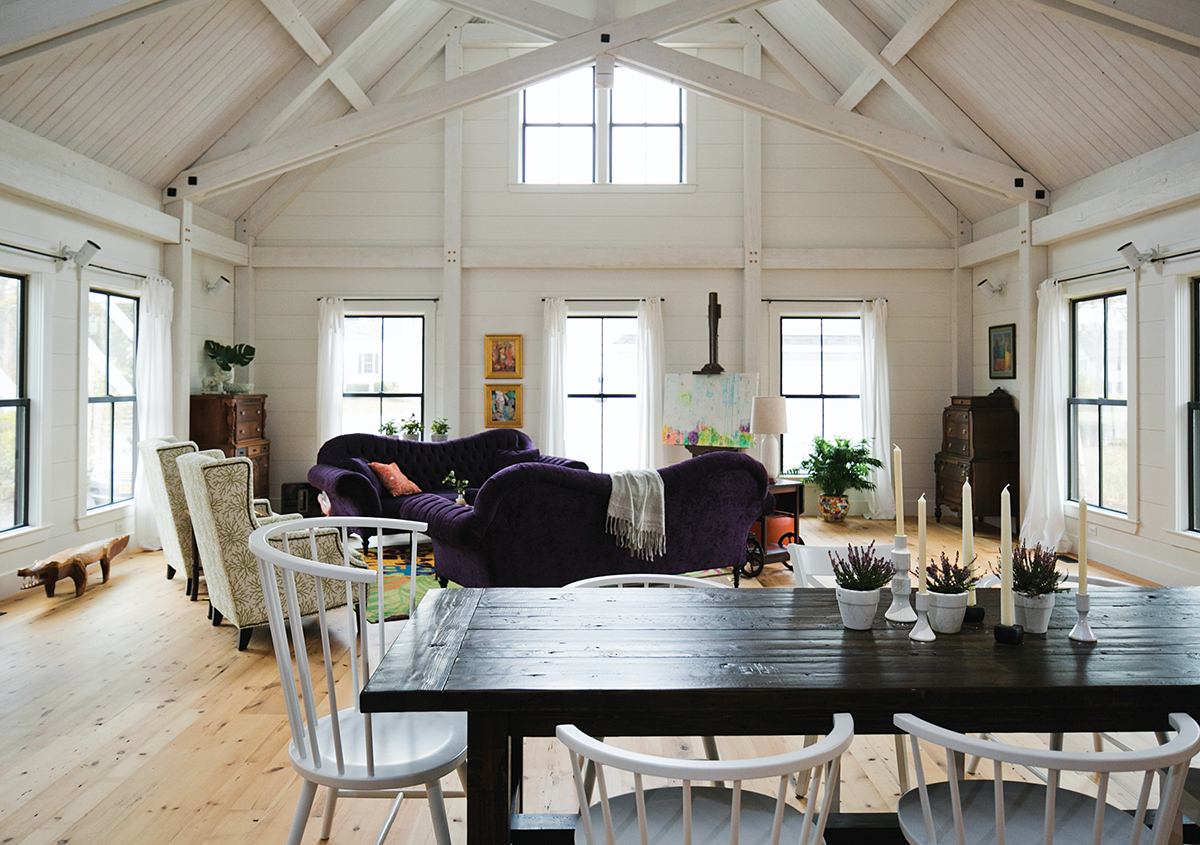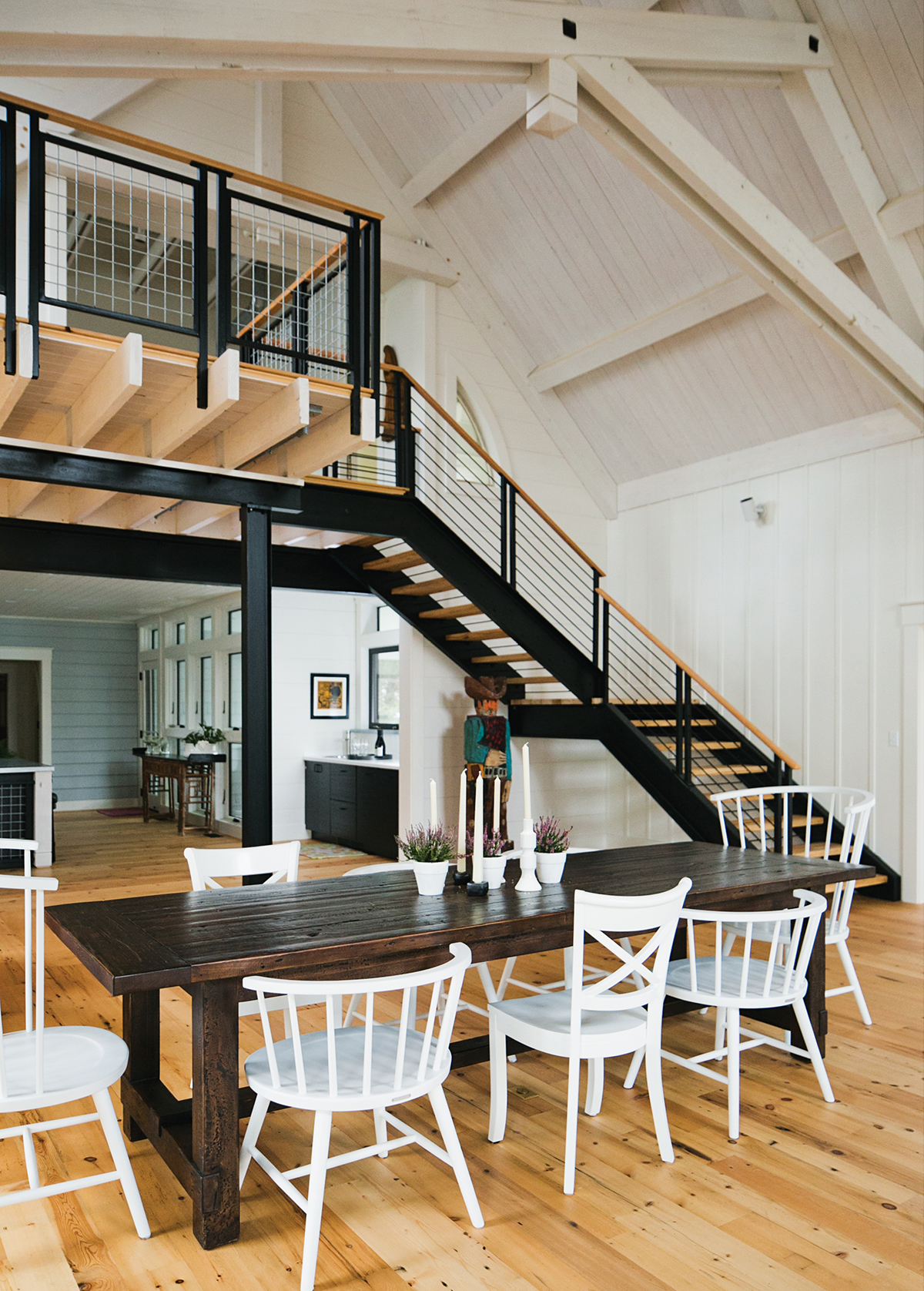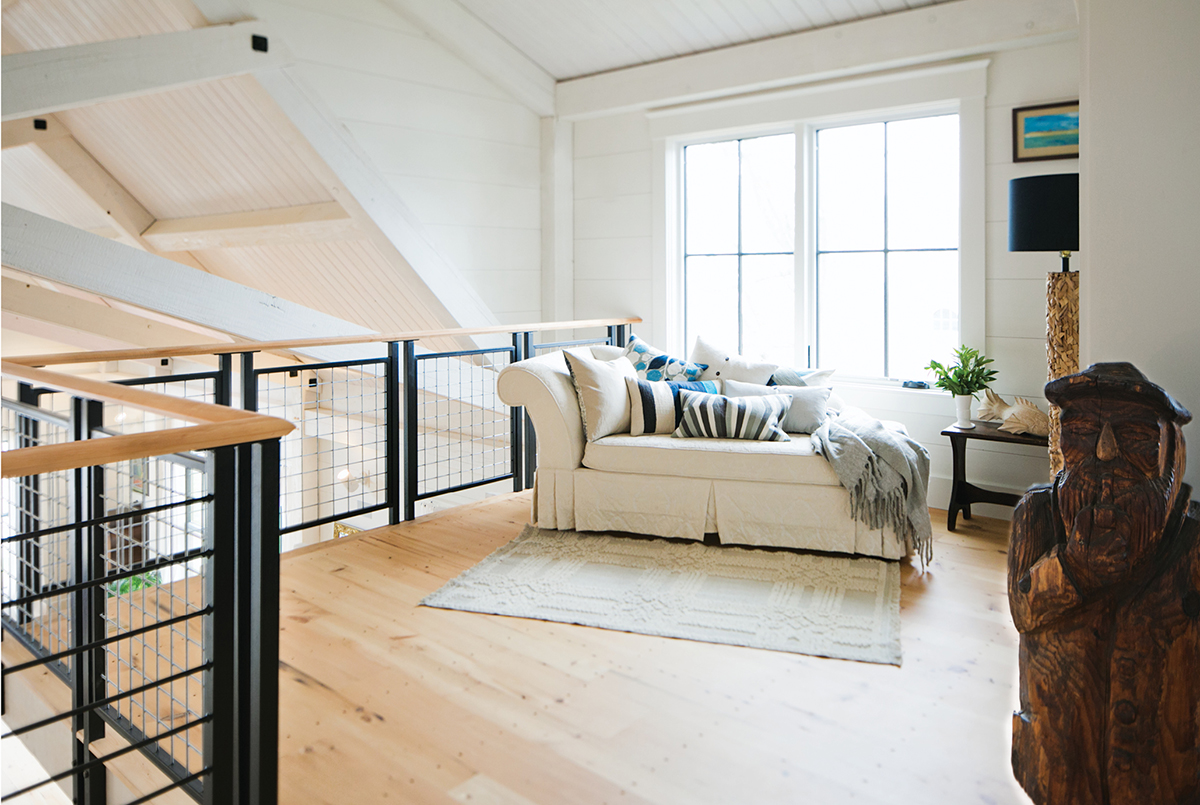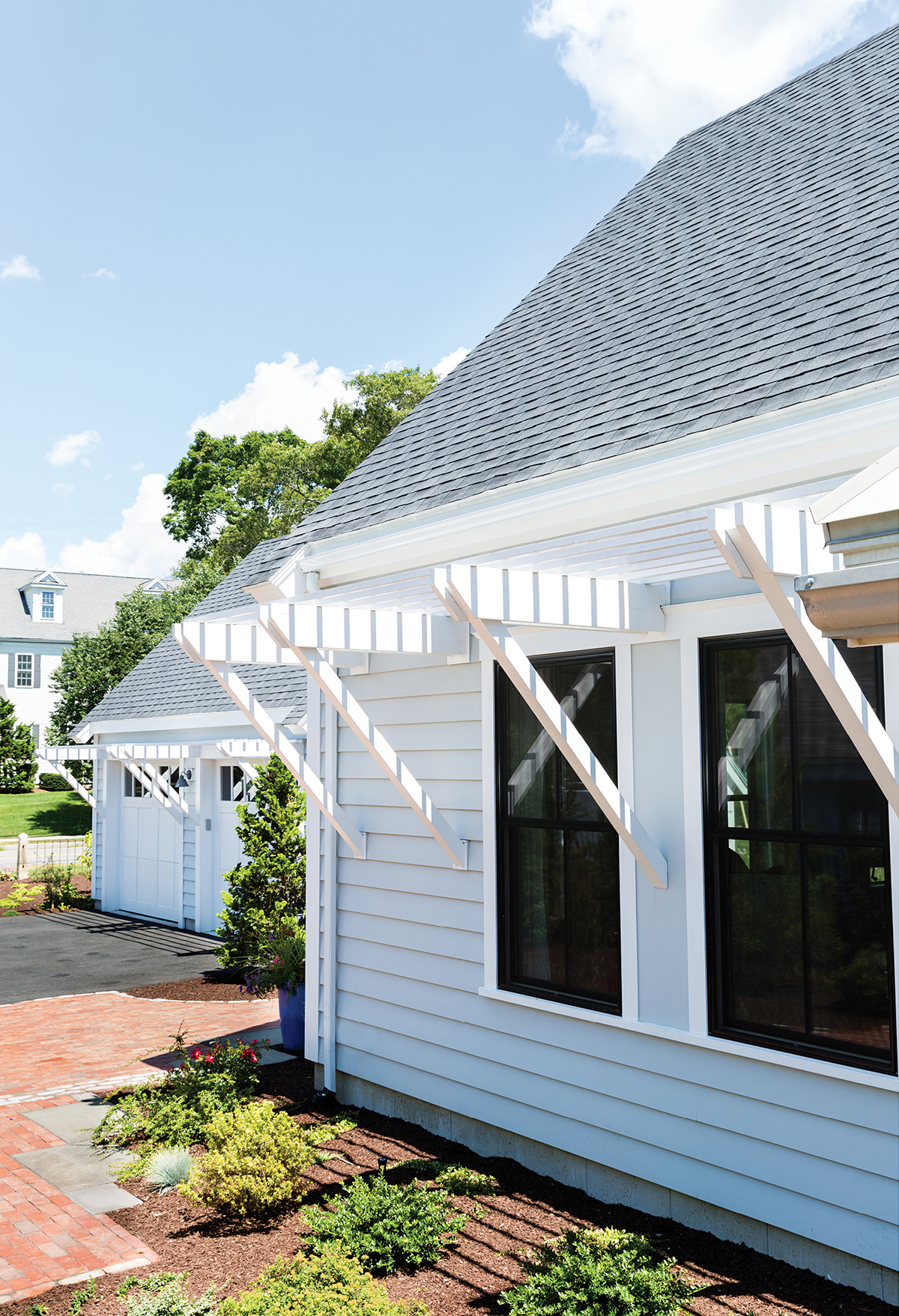A Natick Home with Lofty Ideals

The main space of this Natick home was designed to flow seamlessly from kitchen to dining room to living room to outdoors. / Photograph by Meghann Gregory, styling by Jenny Wilson/Anchor Artists
For 35 years, Steve Levinsky and Denise Girardin lived in suburban Natick, raising two daughters in what Levinsky describes as a “good old Cotswold Tudor with lots of little rooms.” Once the kids moved out, the couple didn’t need all those rooms, but neither were they ready to abandon Natick, where they’d long been involved in the community and the local arts scene. In July 2013 they came upon an unlikely dream property—an abandoned house facing foreclosure, on a narrow lot along busy Pond Street. Within walking distance of downtown, including the studio the couple shares with four other artists, and the train, the location was perfect. The house, though—that had to go.
“There was never a question about tearing it all down,” says project architect Mike Collins, principal of South Natick’s D. Michael Collins Architects, who has known the couple since their daughters were small. “Steve and Denise are both artists, so they had a very open mind about what the house could be.” The couple’s only directive was that the home accommodate their love of entertaining in an “industrial-type” space.

Photograph by Meghann Gregory, styling by Jenny Wilson/Anchor Artists
The first, and biggest, challenge, though, was to create a sense of privacy along such a busy road. Collins took what he calls an “outside in” approach to the design, tackling how the house would fit into the lot before he tackled the house itself. He positioned a freestanding two-car garage in front of the home, facing the street, to serve as a buffer. “Very often in houses along that stretch of road the garage would be in the back,” Collins says, which would often mean a long strip of (unattractive) asphalt driveway, as well as little protection for the house itself. “Instead we created a courtyard and garage up front, and a garden between the garage and the house. There’s no pavement—it’s all garden and grass,” a suburban solution to a downtown location.
For the main house, Collins approached the project almost as if he were building two homes. The goal was to create a pair of new structures not all that dissimilar from many of the neighboring properties. At the front, a post-and-beam timber frame created by Mike Beganyi, of New Energy Works, houses the main living space. The home’s back section, which encompasses the kitchen, the master suite, and a loft, is housed in a traditional stick frame built by Apple Hill Woodworks. Oversize windows and extra-wide clapboards—7 inches instead of the traditional 4 inches—bring the exterior scale in line with the airy interior. At 3,500 square feet, the structure took about 10 months to build. “While it looks like an old barn, which was the goal,” Collins says, “it’s all brand new.”

At approximately 120 square feet, the loft includes a bedroom and a sitting area. / Photograph by Meghann Gregory, styling by Jenny Wilson/Anchor Artists
Inside, the house was designed to be open and connective, uniting around what the couple call their “non-kitchen kitchen,” with a long island, a backsplash made of raw-cut ends of framing lumber, and no visible refrigerators or upper cabinets. “We wanted it to feel like part of the house,” Girardin says. And it does: The kitchen flows neatly into the dining area, which opens into the living room, which then extends into a screened-in porch replicated from the couple’s former home. Tucked away on the first floor is the master bedroom and bath, which opens to a garden. Upstairs consists of a 120-square-foot loft with a single enclosed bedroom—which can be converted into two, if needed—and a quiet seating area for reading or watching TV.
The couple did all of the interior design themselves, working with Collins to incorporate family antiques and other pieces they’d brought from their previous house, as well as new-to-them furniture sourced from a trip to New England Demolition and Salvage, in New Bedford. “As we started the design, Steve and Denise came home with a truckload of architectural salvage and said, ‘We want to integrate all this into the house,’” says Collins, who was able to use just about everything, save for an 18-foot train-station bench that ended up in the garden.
It’s a house that keeps people thinking about “what came first,” Collins says. “Even though it’s all one house, there’s an imaginary history we created with it.” As Levinsky says, “The biggest compliment we get is when people come in and say, ‘What did this used to be?’”

The “non-kitchen kitchen” features under-counter refrigerators and a 13-foot-long zinc-topped island. / Photograph by Meghann Gregory, styling by Jenny Wilson/Anchor Artists

The master bath showcases tiling from Natick’s Tiles Plus More. / Photograph by Meghann Gregory, styling by Jenny Wilson/Anchor Artists

The outdoor pavers were made of recycled brick and granite sourced from a private garden on Beacon Hill. / Photograph by Meghann Gregory, styling by Jenny Wilson/Anchor Artists
Architect D. Michael Collins Architects
Contractors Apple Hill Woodworks; New Energy Works
Millwork Olsen & Olsen


